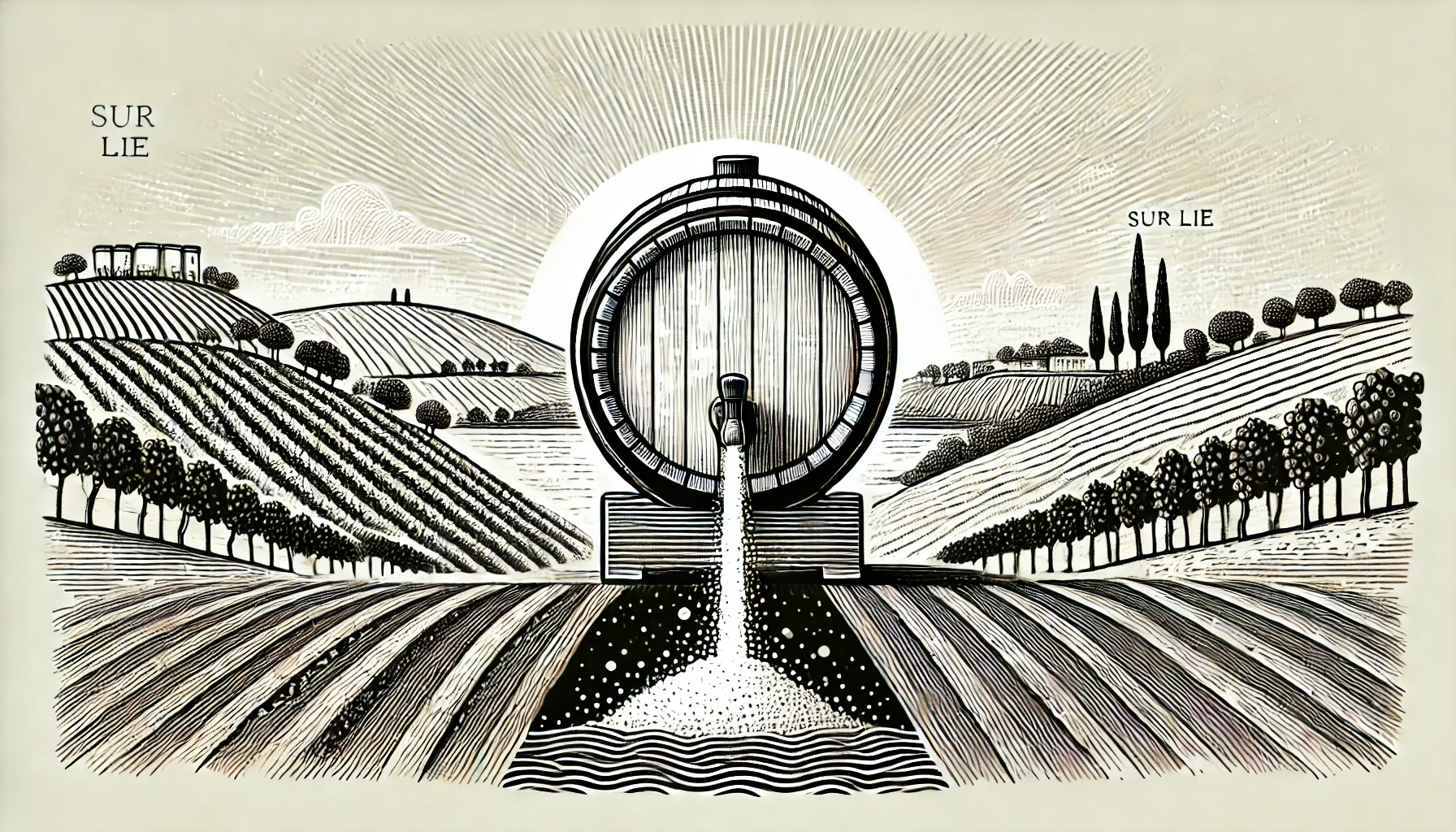
“Sur Lie” is a French winemaking technique in which wine is aged on its lees, or dead yeast cells, after fermentation. The term “lie” refers to the sediment composed of dead yeast and grape particles that settle at the bottom of the barrel or tank after fermentation. Rather than filtering the wine immediately, winemakers leave the wine in contact with these lees for an extended period to enhance the wine’s flavor, texture, and complexity.
The technique of aging “sur lie” is most commonly associated with white wines, particularly in the production of wines like Muscadet from the Loire Valley, Chardonnay (especially in Burgundy), and Champagne. However, it can also be used in red wines or sparkling wines.
Aging wine on the lees imparts a number of desirable characteristics. The breakdown of the yeast cells, known as autolysis, releases compounds that add richness, creaminess, and complexity to the wine. These can include flavors and aromas of bread dough, brioche, or nuts, as well as a fuller mouthfeel and enhanced texture. The process also helps stabilize the wine and can contribute to a longer shelf life.
Bâtonnage
Winemakers may stir the lees periodically during the aging process, a practice known as bâtonnage, to enhance the wine’s exposure to the lees and further develop the desired characteristics. The duration of sur lie aging can vary, ranging from a few months to several years, depending on the style of wine and the winemaker’s goals.
Sur lie aging is particularly important in sparkling wine production, where the lees contact during secondary fermentation (in the bottle for traditional method sparkling wines) contributes to the wine’s characteristic fine bubbles and creamy texture. In wines like Muscadet, sur lie aging results in a crisp, mineral-driven wine with subtle richness.
Overall, the sur lie technique adds depth and texture to wines, making it a popular choice for winemakers seeking to create more complex and age-worthy wines.
Curious about more wine terms and insights? Visit our Wine Wiki section and explore the basic wine terms for expert definitions and tips!